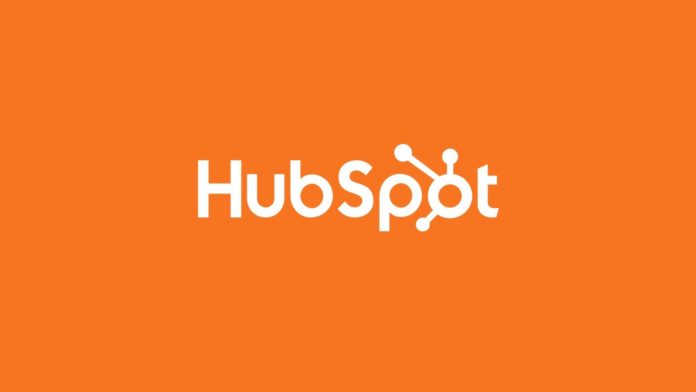Cannot find anywhere HubSpot Alternatives? This post will show you the amazing 11 HubSpot substitutes to enhance the CRM of your business. You have probably encountered HubSpot in some manner if you work in sales or marketing. With roughly a third of the market for marketing automation, HubSpot is clearly a popular platform and frequently cited as one of the top CRMs for small businesses. They are champions of inbound marketing and offer a ton of free materials, including their extensive blog and free online course.
Since I completed the course and used their free CRM as a marketer, I’ll be honest with you and say that I like HubSpot. Although their platform is very user-friendly and their free plan is generous, there is a reason why the business I worked for never switched to one of their paid plans. We simply couldn’t justify the additional monthly expenses as a business. The pricing and plans for HubSpot are detailed here.
So what motivates HubSpot users—both paying and non—to search for alternatives?
Many business owners who are on premium plans upgrade believing it will be the solution to all their issues only to find that they aren’t receiving their money’s worth. After all, in order to fully utilize all the services you are paying for, you need the employees and the time. In reality, a lot of people end up having to pay extra to enjoy a select few top features, which may get expensive.
Small-to-medium-sized enterprises are most likely the users of HubSpot’s free CRM, which they began utilizing to handle their leads and customers as the name implies. Many people feel the service to be insufficient, but they lack the means to upgrade to one of their paid plans due to a number of constraints (more on that below). initially, though
What HubSpot Is Good At
Let’s first quickly review some reasons why some people would want to continue using HubSpot. (Read the complete Hubspot CRM review here.)
Free strategy
With the opportunity to add an infinite number of users and one million contacts, their free CRM package is quite generous. You may put up forms and newsletters, interact with Gmail and Outlook, and define tasks and objectives for your team. See how it compares to our list of the top free CRM programs.
Support:
They have a wide range of beneficial tools and ways to get in touch with them, and their customer service representatives are highly friendly and educated. They can speak six languages (English, French, German, Japanese, Portuguese and Spanish).
CRM attributes:
Any given lead’s whole activity may be seen, including downloads, the source, landing pages visited, etc. By planning and keeping track of every detail, you can manage your sales pipelines with ease as well. Set up lifecycle stages and tag leads in accordance with their interests and stage of the buying process.
Mobile App
HubSpot has a mobile app that makes it simple for users to stay organized and conduct business while on the go.
Integrations:
There are hundreds of third-party app connections available.
Most Serious Drawbacks of HubSpot
Price:
As soon as you upgrade to one of their paid plans, things might become quite expensive. For most small firms, the Starter plans’ monthly cost of $50 or $113 for the sales, marketing, and service hub bundle represents a significant increase.
Pay a whopping $800/month if you want access to their premium marketing capabilities, which include omnichannel marketing automation, corporate scoring, dynamic personalisation, and blog creation. In addition, there are many tools, including those on this list, that perform the majority of these tasks more effectively and inexpensively. Additionally, some programs demand a 12-month commitment and exorbitant onboarding costs.
Reporting: You must purchase their reporting add-on ($200/month) in order to produce custom reports and various dashboards because the free plan’s reporting options are extremely limited.
Templates: As you can see above, HubSpot doesn’t have the best collection of email and landing page templates. They offer an asset marketplace where you can buy landing page templates, but given how much you’re already paying, it hurts quite a bit.
Tasks: The inability to schedule repeating tasks is a minor inconvenience. This means that if you wish to manually add each daily work to your task queues, you must have daily tasks. You cannot sync tasks with your Google Calendar.
A substitute is ActiveCampaign.
The secret is knowing exactly what features you need and not spending an exorbitant price for capabilities you don’t need. There are many all-in-one solutions available that won’t break the budget. You’re sure to find the best tool for you among those on this list because they range widely in their features and costs.
11 Best Hubspot Substitutes to Boost Sales
1.ActiveCampaign

A powerful all-in-one marketing solution without the steep price tag is ActiveCampaign. The automations offered by this Chicago-based business, which let you automate follow-up campaigns, amend numerous conditions, and much more using an intuitive flowchart-style editor, are one of its most significant features. Because of their outstanding automation capabilities, superior deliverability rates, and amazing value for money, among other things, we really rated ActiveCampaign our best email marketing platform. Check this article on ActiveCollab alternatives.
HubSpot falls short of ActiveCampaign
With ActiveCampaign’s strong CRM, tasks between sales and marketing can be automated with ease. I particularly enjoy their straightforward drag and drop card-based pipelines and lead/contact scoring tools (Trello users will know what I mean).
The Plus plan also includes a decent selection of templates and a landing page editor.
You may get premium email marketing (with 125 responsive templates), marketing automation, reporting, and support for as little as $9 if you don’t need a CRM or landing sites. The Pro plan, on the other hand, starts at $49 per month for 500 contacts. Keep in mind that HubSpot only offers email automation on the Starter plan, and that you must pay $800 per month to get its omnichannel marketing automation tools. Learn more about how the costs of ActiveCampaign and HubSpot differ here.
You may import orders into your account thanks to ActiveCampaign’s rich data connectors if you run an online store. Presently, WooCommerce, Shopify, BigCommerce, and Square all support it.
Standard reporting capabilities in ActiveCampaign are also superior to those in HubSpot. They offer goal-based reports that you can create yourself, automation reports, contact trend metrics, conversation reports (for their live chat and email support features), and discussion reports in addition to basic campaign reports. Reports on e-commerce are also accessible.
HubSpot has not yet created the ability to sync calendar tasks from Google Calendar, Outlook, and Apple Calendar so that they appear within your CRM, but ActiveCampaign does. I could gush about ActiveCampaign all day, but I realize you’re busy.
Where HubSpot succeeds
In comparison to HubSpot, ActiveCampaign offers fewer choices for customizing the dashboard (albeit this functionality isn’t free). Although it is a much better value for money when you consider all the premium features you get for a very affordable fee, ActiveCampaign does not provide a free plan. Visit our in-depth ActiveCampaign vs. HubSpot comparison to learn more, or read our ActiveCampaign alternatives guide for more information.
Suitable for:
All types of businesses can profit from joining ActiveCampaign because of its top features and inexpensive beginner plan. If you really run an online store, you may tailor your email marketing campaigns based on customer behavior, order information, and the recovery of abandoned shopping carts.
2.Freshsales
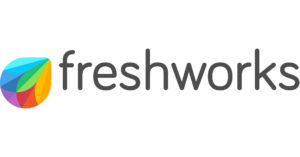
With its graphic sales pipelines, workflows, personalized reporting, and other features, Freshsales is primarily a CRM tool for sales teams. There are three paid options available: Growth, Pro, and Enterprise; additionally, users can join up for the “Freshsales Suite,” which offers a few extra marketing features.
When Freshsales triumphs over HubSpot:
There’s also a free plan accessible for people just starting out. Compared to the HubSpot, Freshsales has a much simpler pricing structure, and the price bump between levels isn’t as dramatic as with HubSpot. I particularly liked the drag and drop deal pipeline view, which gives you all the information you need at a glance, including tags like “Warm lead” or “At risk.” Leads are also given a score, which actually allows you to analyze them on an even deeper level. The CRM software is a robust and comes with plethora of customization options.
Where HubSpot succeeds
Freshsales’ free plan offers no reports, but HubSpot’s reports are rather extensive even on their free plan, which is actually a little more generous than Freshsales’ as it contains 1M contacts.
Suitable for:
It will be more appealing to sales teams than marketing teams, but you might find that the Freshsales Suite has enough capabilities to satisfy both teams. Freshsales is a moderately priced CRM software for small organizations.
3.EngageBay
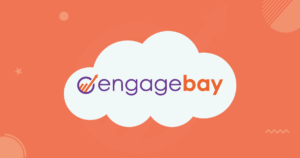
With capabilities like email marketing, landing pages, live chat/helpdesk, ticketing, appointment scheduling, contact management, and more, EngageBay is a platform that is quite comparable to HubSpot in terms of functionality.
Where EngageBay excels over HubSpot
The difference is obvious when you look at EngageBay’s paid plans, which are actually really very reasonable, especially when you consider how diverse their services are. Pro plan will actually cost you about $49.99/month and there are no mandatory onboarding fees. They also offer a free plan, which actually includes a wide variety of features and is not dissimilar to HubSpot’s. EngageBay gives you the freedom to store as many (or as few) contacts as you’d like in terms of contact management. A lead can add notes, store documents, view emails that have been forwarded to them, communicate with agents, and more.
Where HubSpot succeeds
Your emails and contacts are limited to 1,000 with EngageBay while HubSpot is a little more forgiving if you compare simply their free options (2,000 emails and 1M contacts).
EngageBay loses to HubSpot in terms of integrations.
Suitable for:
startups and small-to-medium-sized companies seeking an all-inclusive marketing suite at an affordable price.
4.CRM Zoho
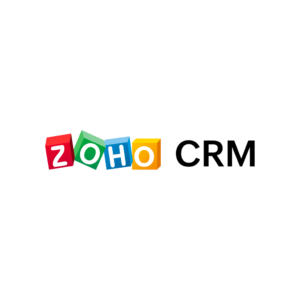
Like HubSpot, Zoho is a marketing behemoth that can do it all. The company’s most well-known services include email hosting, website design, and CRM software, but you can also find project management, accounting, and customer support software on their extensive list.
The best news is that Zoho CRM allows for up to 3 users for free. If you’re looking for a HubSpot substitute, you’ll probably be interested in CRM software.
Where Zoho excels over HubSpot
Aside from the fact that a free plan is offered, the paid plans are inexpensive because you just pay for what you actually use. I loved that contacts, leads, accounts, and deals could be viewed in 3 distinct ways in Zoho CRM: kanban, canvas, and tubular. HubSpot only has 2 views.
The “activities” part of Zoho CRM is quite special because it lets you filter by activity type, such as open tasks, meetings for tomorrow, all calls, etc. Numerous criteria are available, and it appears to be a terrific way to find what you’re looking for easily. There are many reports you can create, and the analytics part is comprehensive and quite simple to understand visually. Additionally, you can design unique dashboards.
Where HubSpot succeeds
Even though it is reasonably simple to use, the interface isn’t very cutting-edge, especially when compared to HubSpot’s. Additionally, there is no live chat assistance available, in contrast to HubSpot’s quick response time. In contrast to Zoho CRM, HubSpot provides capabilities like SMS marketing, event management, and split testing.
Suitable for:
Both large companies and small organizations can use Zoho CRM. It’s a fantastic HubSpot substitute because there are no setup fees and a pay-for-what-you-need pricing structure.
Free trial of Zoho CRM!
5.GetResponse
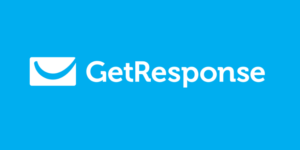
GetResponse, a corporation with its headquarters in Poland, has been in operation for more than 15 years. Their services are offered in 27 different languages, and they have a global reach of 183 nations. Their product is intriguing, especially with the conversion funnel included. They implemented a feature in the beginning of 2019 that handles traffic generation and can potentially serve as an online store. Check this article on ProofHub alternatives.
They provide outstanding automations, similar to ActiveCampaign, that are “simple and advanced” — a marketer’s dream!
Where GetResponse excels over HubSpot:
GetResponse’s conversion/sales funnel feature is what makes it a top HubSpot substitute. You can quickly build your own funnels using the pre-built funnel templates that are included. These funnels can include landing pages, forms, emails, and more. You can even accept payments using gateways like Stripe, PayPal, and Square. You can A/B test GetResponse’s more than 180 responsive landing page layouts to obtain the best results. All of the plans have unlimited landing pages, so even if you only pay $19, you may take advantage of this functionality.
The Plus subscription costs $59/month for 1,000 subscribers, unlimited webinar funnels, and webinar hosting for up to 100 participants, but the features are much more complex. Additionally, you’ll get 5 sales funnels. There are certainly less expensive programs, but they lack sophisticated automations.
Where HubSpot succeeds
If all you are looking for is a CRM, HubSpot’s free CRM is a decent choice because GetResponse’s free plan doesn’t contain one.
HubSpot offers a variety of marketing capabilities, like social media scheduling, content production, and SEO strategy tools, if you’re willing to part up the cash ($800/month!). However, that’s a substantial expense that you probably could do without.
Suitable for:
For companies who operate online stores or hold webinars, GetResponse is a smart choice. It is definitely worthwhile to check out their Autofunnel feature as it may greatly aid in generating traffic and leads.
6.Pipedrive

Any small-to-medium-sized business would be satisfied with Pipedrive, a CRM software that is largely geared towards sales teams. Pipedrive’s UI is relatively simple to use and a fantastic tool for all levels, despite the numerous customization choices and dashboard features. In our thorough head-to-head comparison of Pipedrive and HubSpot, we discovered that there wasn’t much of a difference between the two platforms; they both have great reporting features, are well-designed, and have respectable multi-channel support.
Where Pipedrive excels over HubSpot
HubSpot’s premium plans are significantly more expensive than Pipedrive’s. Furthermore, unlike HubSpot, you can pay for a single user. Plan begin at $18 per month per user and increase gradually as you add more users. Additionally, there are discounts if you pay yearly.
Where HubSpot succeeds
HubSpot’s Free CRM package is definitely worth taking a look at if you’re looking for a free solution that can also offer you marketing capabilities like forms and landing pages. Additionally, it offers email capabilities like its Discussions mailbox, which allows agents to browse, manage, and respond to incoming conversations in one location.
Additionally, HubSpot has many more third-party tool direct integrations.
Suitable for:
For expanding companies on a tight budget, it’s a wonderful long-term solution because you’ll have access to cutting-edge CRM capabilities without having to spend hundreds of dollars.
7.Sendinblue

With 80,000 users and 100 million emails exchanged daily, Sendinblue began in Paris in 2012! With a CRM and email automation, transactional emails, SMS, landing sites, and Facebook advertisements included, their package is rather comprehensive. They have a free plan, similar to HubSpot, but how do their paid plans compare?
When Sendinblue triumphs over HubSpot:
Sendinblue is a wonderful HubSpot substitute in large part due to its affordable free plan, which includes unlimited contacts, a built-in CRM, marketing automation, and web tracking. In contrast to HubSpot, switching to a subscription plan only requires a small hop; paying plans begin at $25 per month. Sendinblue is an excellent option for companies that have a vast contact base but only send a small number of emails each month because it costs per email rather than per contact. Check this article on Insightly alternatives.
Even under the free plan, Sendinblue’s editor is user-friendly and offers a good range of templates. Although HubSpot’s free tier is devoid of templates, upgrading to their Marketing Starter service solely for this access would be absurd. The capability to send transactional emails helps Sendinblue stand out as a top substitute, as well (e.g. invoices or order notifications or sign-up emails, etc.). This feature isn’t provided by HubSpot.
Where HubSpot succeeds
HubSpot continues to outperform the Sendinblue in terms of CRM functionalities. Sendinblue does allow you to define tasks and deadlines within each client profile and allocate contacts to different people, but HubSpot’s deal monitoring and pipeline management features are significantly more advanced.
Suitable for:
Budget-conscious companies seeking a comprehensive service that won’t break the bank. Sendinblue’s ability to send the SMS and transactional emails will draw e-commerce companies.
Try Sendinblue for free today!
8.Drip

Drip, which debuted in 2013, has become increasingly popular in the realm of sales and marketing. More than 6,500 ecommerce firms have joined them because they emphasize the “human side of ecommerce.”
Where Drip excels over HubSpot
A crucial component of Drip’s service is advanced automation. Their automated workflow editor is user-friendly, well-designed, and adaptable, and it’s kind of enjoyable to use because to the amusing icons and vibrant colors. Select from a wide range of triggers, including link clicks, page views, tags applied, or even a transaction made through your online store.
You can pretty much construct whatever automation you want with Drip, but ecommerce automation is where they really excel. With Drip, you can not only set up an abandoned cart automation but also go one step further and have the automation start when customers just create a checkout (without necessarily completing it). These are relatively easy to set up and available by default. Check this article on Jira alternatives.
Their tagging system is another another excellent feature. These can be used to classify your contacts based on factors like their source, whether they are clients or not, or whether they have visited a particular page on your website. Either in an automation workflow or using Drip’s all-purpose “Rules” feature, you can add tags. For instance, you could build up a campaign to be sent to leads who have visited a certain page and marked them as “interested.”
Drip uses its ecommerce CRM to store all of your contact information and assigns each contact a single lead score. This helps you gauge a person’s level of interest or likelihood to buy something.
Where HubSpot succeeds
Drip doesn’t provide any type of design testing or spam. Despite HubSpot’s lack of spam testing features, you may test your design on a variety of email clients. HubSpot is more versatile because it can be used for any type of business. Drip, on the other hand, is restricted to people who own online shops.
Suitable for:
A fantastic all-in-one option for e-commerce companies is drip. Your time will be greatly reduced by their direct integrations and smart automations for even the smallest triggers, which should also result in large financial gains. Prices for 2,500 contacts and all the features start at $39 per month.
>Try Drip risk-free!
9.Ontraport

This all-in-one program, which is based in California, has gained a lot of popularity throughout the world for its strength and ease of use. Thousands of business owners throughout more than 60 nations are actually served by Ontraport. Check this article on Trello alternatives.
Where Ontraport excels over HubSpot
When your marketing efforts consist of so many levels, it’s natural to become a little overwhelmed (emails, landing pages, forms, social ads, etc.). You can combine all of this with other options through Ontraport to build comprehensive automated funnels. This enables you to better track the success rates of each endeavor and gives you a more comprehensive picture of your overall efforts. With an endless supply of the free automation templates, you can be highly specific with your automations and completely customize the user’s path and the buyer experience.
Their CRM contains all the data you could possibly need on your leads and customers, making it a potent rival to HubSpot. Additionally, they offer a wide range of adaptable landing page templates that are simple to alter and split-test across numerous pages. Ontraport allows you to set up and control all aspects of your e-commerce. Consider automated sales, payment processing, secure order forms, coupon codes, recurring payments, and cart abandonment.
Where HubSpot succeeds
In contrast to HubSpot, which supports six languages and has support teams located around the Americas, Europe, and the Asia Pacific, Ontraport is now only available in English and Spanish. Ontraport’s reporting interface lacks graphs and charts, which makes it less aesthetically appealing.
Suitable for:
Ontraport isn’t the cheapest HubSpot alternative, with plans beginning at $79/month, but it still offers exceptional value. As they offer in-built software for this business model, it’s an excellent solution if you’re going to set up an affiliate network for your project.
10.Wishpond

Another Canadian company competing with HubSpot and offering an all-in-one marketing solution is Wishpond. You may make landing pages, pop-ups, and social media contests using the user-friendly platform. A built-in CRM, automation software, and email marketing are also included, which is more significant.
Wishpond outperforms HubSpot where:
HubSpot’s templates for landing pages and emails are terrible. Wishpond offers a wide selection of stylish, contemporary templates that are really easy to set up.
Where HubSpot succeeds
Wishpond’s starting prices may be a little lower and they don’t have a freemium plan.
Wishpond doesn’t have a mobile app either, but depending on your business, you might not find this to be a deal-breaker.
Suitable for:
Small- to medium-sized enterprises that don’t want to pay the steep fees associated with HubSpot’s pro plans might choose Wishpond as an alternative.
11.Artic PinPoint
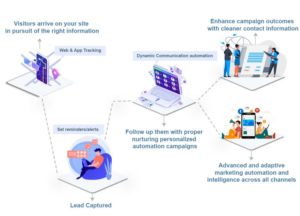
Artic provides a full-stack automation platform and claims to have over 2,500 clients. Their price structure is separated into different “stacks” similar to HubSpot’s, including PinPoint (a full marketing solution), Sales CRM, Desk (for customer care representatives), and Mail (transactional email), as well as a number of add-ons. They have a wide range of services, and they even provide a free CRM.
Where Aritic PinPoint excels compared to HubSpot
Although Aritic and HubSpot divide out their marketing and sales functions in a similar manner, Aritic are far more generous with their features. With subscription options starting at $19/month for 1,000 contacts and 1 free user, it offers better value for money.
Lead profiling, lead activity tracking, sophisticated segmentation, and automations are some of its standout features. Additionally, transactional emails—which HubSpot excludes—as well as landing pages, SMS campaigns, push notifications, and social media campaigns are included. There are more included themes than you’ll find with HubSpot, at least 50.
Where HubSpot succeeds
HubSpot’s software is more user-friendly than Aritic’s. In fact, some buttons are a little buried, and the procedure occasionally feels clumsy. With third-party apps, HubSpot offers a little bit more native integrations.
Suitable for:
Although using the program may require some practice, once you do you’ll find Aritic’s features to be rather outstanding.
Try out Aritic without cost!
HubSpot Alternate Results
So as you can actually see, there are a ton of HubSpot rivals out there who genuinely provide a cheaper, and frequently, better, offering.
As you can see, no two solutions are same, and one will work better than the other depending on the business. Let’s briefly review which tool is the most appropriate for each task. I suggest ActiveCampaign, GetResponse, or Ontraport if you need top-notch automations. Freshsales, EngageBay, Pipedrive, or Drip are terrific choices if you’re looking for an easy-to-use tool that doesn’t sacrifice on capabilities.

